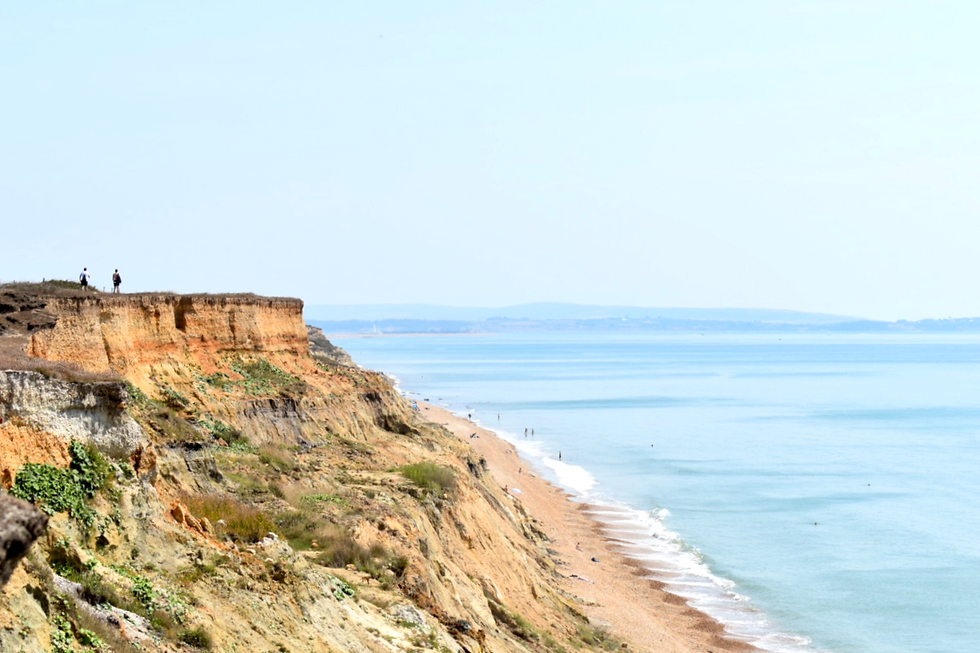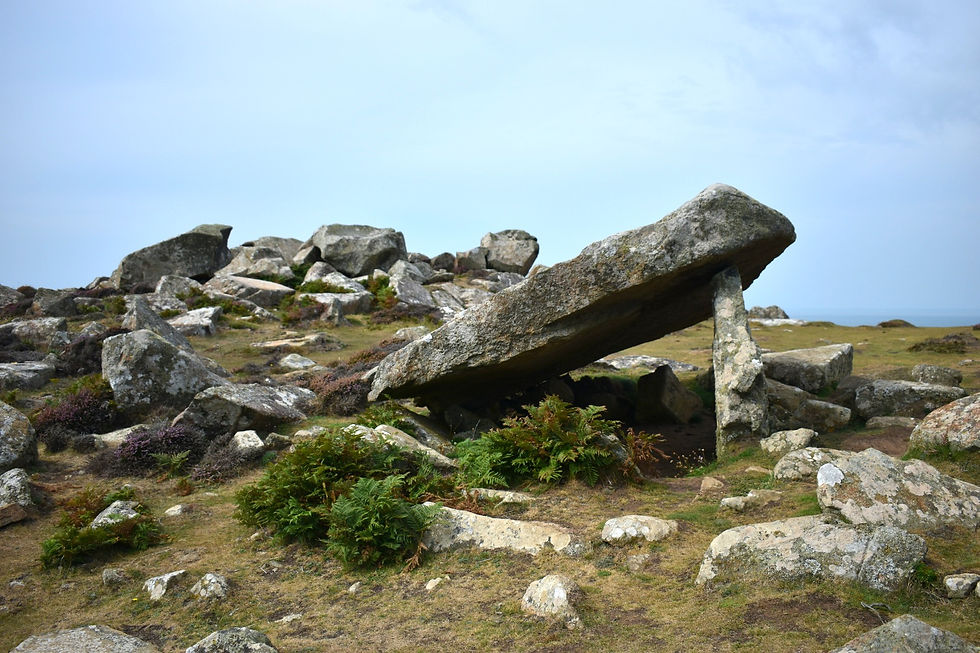Barton Cliffs
- Isobel Akerman

- Oct 18, 2020
- 2 min read
| Ancient * South Coast |

Around the UK, land is disappearing at a rate of 4 metres per year. The yellow cliffs of Barton are a particularly devastating example of the erosion that can be seen all around the country.
The footpath that weaves around the top of these cliffs can be walked along for quite a while. Starting in Lymington you can follow it, lose it, and pick it back up, all the way to Christchuch - about twelve miles away. But the nature of these ancient cliffs have changed over the centuries, and now the walkers, ramblers, and beachers need to pay close attention to their footsteps lest they fall into one of the huge crevasses created by extreme land erosion.
Erosion is natural. The cliffs of Barton are expected to move backwards. Slowly. And Evenly. But they’re disappearing way too fast, and in huge chunks at a time rather than in a slow even movement. In only the past century, 80 metres of the cliff has disappeared.
Severe erosion also isn’t new. The 14th century saw a huge change in the landscape of this area due to rise in sea level, and over the centuries you do get sporadic storms which chip away at the sandy cliffs. By the 1970s however, the landslides had become extreme and and far too common; metres of land were lost, buildings were destroyed, and the gaps in the cliffs became obvious and destructive.
This phenomenon is, (on a basic level: ask a geologist for details), caused by too much water in the cliffs. With extreme weather (especially the combination of dry summers and wet winters) the soil can’t hold the moisture that accumulates. It becomes waterlogged, and it falls. Here, this had been made worse by the increasing number of streams which start in the New Forest and flow all the way down to the Barton cliffs, creating underground rivers and weakening the land.
The best way to counteract this is by getting the water down from the top of the cliffs into the ocean where it belongs – basically taking out the middleman. The first attempt at this was in the 1850s when Lady Waterford created a draining system; but it really took off in the 1960s when coastal protection plans were initiated. Unfortunately, the admin involved with land ownership meant that no-one seemed to have accountability for the maintenance of these systems. The area is now protected by the New Forest District Council, who have been organising numerous research projects into strategic and sustainable ways to deal with the ongoing issues.
The only thing preventing more of the same is something almost impossible to achieve: no more global warming, no more extreme weather, no more rising seas. But as we try to solve those global problems, the local authorities are focused on each issue at a time. It will always help to keep track of what our landscape looked like in previous generations: how it has changed, why it has changed, and what we want to do about it.
Barton on Sea, New Milton BH25 7DX




Comentários